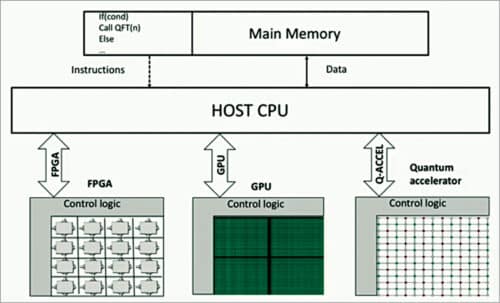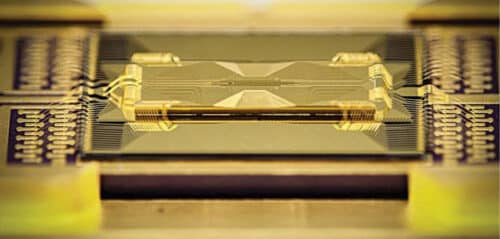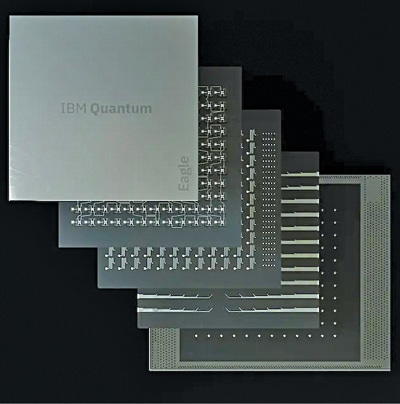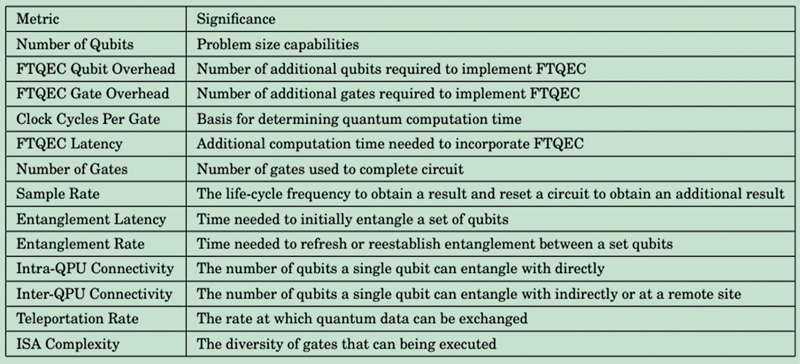It will still take about a decade for quantum computing technology to be a part of our daily lives. Nevertheless, one of the most active areas of research and development nowadays is quantum computing. That’s because the adoption of quantum processing units (QPUs) for both application-specific and general-purpose computing is likely as they develop from being just simple scientific testbeds to reliable devices.
The term ‘quantum chip,’ or ‘quantum processing unit,’ or ‘QPU’ refers to a physical (fabricated) chip that has several interconnected qubits, or quantum bits. A QPU serves as the basic building block of a complete quantum computer, which also consists of the control electronics, the QPU’s housing environment, and several other parts. A QPU enables a form of computation that’s built on quantum physics—nature’s operating system.

How a QPU differs from a CPU
A quantum computer (with QPU) operates in a fundamentally different way from a classical computer. A ‘bit’ in traditional computing (using a CPU) is a very small unit of binary data, which can be either a one or a zero. A processed bit is implemented by one of two levels of low DC voltage in traditional computer systems. The most recent variation of this concept is the ‘qubit,’ or quantum bit. Qubits use the phenomenon of superposition, which enables them to be in numerous states simultaneously, in contrast to binary bits, which can only be in either/or situations.
The capabilities of quantum computers surpass those of traditional computers, especially in terms of speed. A quantum computer can complete a task in two or three stages, whereas a classical computer needs thousands of steps to handle the same problem. Therefore, most quantum chips or QPUs are used as accelerators in heterogeneous multi-core computing devices. These can be connected with a classical processor (CPU) to provide a performance boost that cannot be achieved classically.
The classical control circuitry and the quantum processing unit (QPU) are two of the most important components of hardware in quantum computing. Some of the subsystems of the QPU include registers and gates (sometimes called QRAM), a quantum control unit for driving the system states, and circuitry to interface between the classical host CPU and the QPU. However, there are various types of QPUs with variations in the subsystems as well as the underlying principles.
Types of QPU hardware
Spin based
The spin qubit quantum computer works by manipulating the spin of electrons and electron holes, which are the charge carriers in semiconductor devices. Here, individual charges and their associated spins are trapped in semiconductor quantum dots (QDs), which are subsequently utilised as qubits. Leti, Intel, Imec and others are working on this technology.

When asked why Intel focuses on silicon qubits in an IEEE Spectrum interview, Jim Clarke, Director of Quantum Hardware at Intel said, “Silicon spin qubits look exactly like a transistor… The infrastructure is there from a tool-fabrication perspective. We know how to make these transistors. So, if you can take a technology like quantum computing and map it to such a ubiquitous technology, then the prospect for developing a quantum computer is much clearer.”
Tapped ion based
In this system, the qubits are ions trapped by electric fields and controlled by lasers, as the name suggests. The qubits are long-lived because trapped ions have relatively long coherence periods. They can also communicate with each other without difficulty.
Trapped-ion qubits are the technology of choice for research teams at numerous universities across the world as well as at firms doing similar work, like Honeywell and IonQ. In fact, IonQ has released what they claim to be the industry’s first programmable multicore quantum architecture (RMQA), which is based on trapped-ion qubits.
Infineon Technologies and Oxford Ionics announced a partnership in July 2022 to develop highly effective, fully integrated QPUs. The innovative electronic qubit control (EQC) technology from Oxford Ionics provides a way to incorporate trapped ion qubits into Infineon’s established semiconductor manufacturing processes.

Superconductor based
One of the most promising methods for creating quantum computers is using superconducting qubits. Superconductivity, being a quantum phenomenon, permits us to employ superconducting circuits as controllable quantum systems. The Eagle quantum processor, based on the transmon superconducting qubit architecture, was introduced by IBM Quantum in November last year. It has 127 qubits. By 2023, the company plans to release a processor with 1121 qubits.
How to select a suitable QPU for your application
Every firm has a different set of insights that it needs in order to make the best choices. Based on your organisation, your current applications, and your computational needs, you need to take a decision on whether to use QPUs or not. First, you need to check if you have truly potential applications of quantum computing, and whether you have the funds to facilitate them.
| Some Interesting Developments in the Quantum World |
|
As seen previously in this article, every quantum computer is built using a somewhat distinct hardware design and a multitude of qubit kinds. Each can also have a different architecture. Because of this diversity, certain systems will be more effective at resolving various types of issues than others. Therefore, you must be prepared to consider a variety of factors while selecting a QPU for any application. Here are some pointers that will make that decision easier.
Identifying and analysing the problem
First, you need to identify the problem in your company or organisation that has the potential to be solved by quantum computing. The ideal strategy is to first identify the parameters that most likely indicate quantum opportunities. These parameters include complexity, problem size, potential for more precise outcomes, and potential for quicker turnaround times for results.
You should then analyse the problem in terms of its processing and mathematical computing requirements, then relate those requirements to the capabilities of a variety of QPUs. Refer the box item above to have a look at some common-use cases of QPUs.

Testing the QPU
Before investing, you need to test the system to make sure it meets your requirements and benchmarks. The typical method would be to perform a number of tests for a few qubit operations and compare the findings with those from a conventional (classical) computer model imitating the quantum tech.
Be aware that the output of quantum computers differs from that of classical systems. A quantum computer, for instance, produces a variety of outcomes for optimisation problems that all satisfy the optimisation requirements. Classical systems only produce the best outcome.
Testing the software
To operate a quantum computer, new code and algorithms must be written. In order to test them, you can either test a single algorithm on a quantum computer or use ready-to-run software.
| Some Common Use Cases of QPUs |
|
Important performance metrics of a QPU
In their paper, High-Performance Computing with Quantum Processing Units, researchers Keith A. Britt and Travis S. Humble identify various performance metrics of QPUs, which capture the interplay between system architecture and the quantum parallelism that underlies computational performance. Here, FTQEC stands for fault-tolerant quantum error correction, an error correction technique commonly used in QPUs.
“The comparison of these metrics with each other offers a quantitative means of assessing the value of QPU-enabled systems, but only when they can be related to existing system metrics, e.g., FLOPS, etc,” wrote the authors.
| A Customised QPU for Your Application |
| QuantWare, a Netherlands based company, has declared that it can now provide researchers and other companies in the field with a custom 25-qubit QPU. This new QPU can be delivered, according to QuantWare, in just 30 days! Buyers can select the components they want for the new QPU from a library, and they can also decide how the qubits are connected based on their individual requirements. |
India and the quantum race
With strategic partnerships, budding startups, early investments and adoption, India has joined the quantum race and aims to be the quantum hub of the future. “Indian philosophy and scriptures have been talking about quantum, and it is the basis of the Indian Vedanta system,” says Sunil Gupta, Co-founder & CEO of QNu Labs.
QNu Labs is a great example of an Indian quantum startup. In fact, it is India’s only Quantum-tech Cybersecurity company as of now. It is trying to reimagine cybersecurity in a futuristic way, build it here in India, and then take it to the whole world.

Another example would be BosonQ, a Bhilai based startup founded in 2021. The company creates cutting-edge software for quantum computing, such as multidisciplinary optimisation, computational aeroacoustics, computational fluid dynamics, computational structure dynamics, and computational heat transfer.
On the research front, a collaborative declaration to create a virtual network centre for quantum computing was signed by the governments of India and Finland on April 18, 2022. Even IBM is planning to create a national quantum plan in India. Institutions like TCS, DRDO, TIFR and many educational institutions are also working towards the same broad goal—developing a quantum ecosystem in India.
In a relatively short period of time, India certainly seems to be advancing its capabilities in quantum technology. And there’s a lot more to come.
The author, Aaryaa Padhyegurjar, is an Industry 4.0 enthusiast at EFY with a keen interest in innovation and research.






